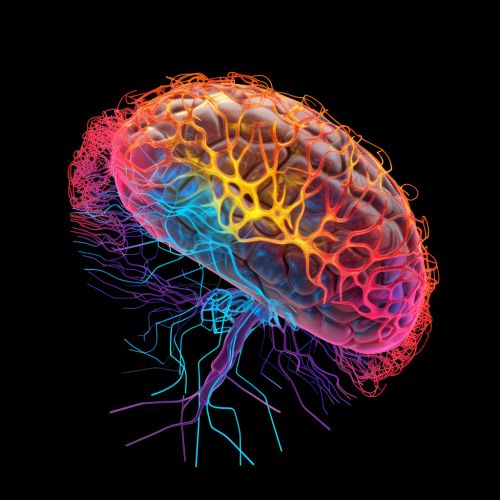Cognitive Neuroscience of Memory
Introduction
Cognitive neuroscience of memory is a branch of cognitive neuroscience that explores how various forms of memory are processed and stored in the brain. This field combines principles from psychology and neuroscience to understand the neural mechanisms underlying memory formation, storage, and retrieval.


Memory Systems
The human brain contains multiple memory systems, each responsible for different types of memory. These systems are interconnected but largely independent, allowing for the simultaneous processing and storage of different types of information.
Declarative Memory
Declarative memory, also known as explicit memory, involves conscious recollection of facts and events. This type of memory is further divided into semantic memory, which pertains to general knowledge about the world, and episodic memory, which involves remembering specific events from one's past.
Non-Declarative Memory
Non-declarative memory, also known as implicit memory, involves learning and memory that occur without conscious awareness. This type of memory includes procedural memory, which involves learning motor and cognitive skills, and priming, a phenomenon where exposure to a stimulus influences response to a later stimulus.
Neural Correlates of Memory
The neural correlates of memory refer to the specific brain regions and circuits involved in memory processes. Different types of memory are associated with different neural structures and pathways.
Hippocampus
The hippocampus is a critical structure for declarative memory. It is involved in the encoding, consolidation, and retrieval of episodic and spatial memories. Damage to the hippocampus can result in severe memory impairments, particularly in forming new memories.
Amygdala
The amygdala plays a crucial role in emotional memory. It helps encode and consolidate memories with emotional significance, enhancing the strength and vividness of these memories.
Prefrontal Cortex
The prefrontal cortex is involved in working memory, a type of short-term memory that allows for the temporary storage and manipulation of information. It is also involved in the strategic control of memory, such as in retrieval and monitoring processes.
Memory Processes
Memory involves several processes, including encoding, storage, and retrieval. Each of these processes is associated with different neural mechanisms and structures.
Encoding
Encoding is the process of transforming sensory information into a form that can be stored in memory. This process involves the activation of specific neural circuits that represent the encoded information.
Storage
Storage refers to the process of maintaining encoded information in memory over time. This process involves the strengthening of neural connections through a process known as long-term potentiation.
Retrieval
Retrieval is the process of accessing and bringing stored information back into conscious awareness. This process involves reactivating the neural circuits that were involved in the original encoding of the information.
Memory Disorders
Memory disorders are conditions that disrupt the normal functioning of memory. These disorders can result from damage to memory-related brain structures or from neurodegenerative diseases.
Amnesia
Amnesia is a memory disorder characterized by an inability to remember facts, events, or personal experiences. This disorder can result from damage to the hippocampus or other brain regions involved in declarative memory.
Alzheimer's Disease
Alzheimer's disease is a neurodegenerative disorder characterized by progressive memory loss and cognitive decline. This disease is associated with damage to the hippocampus and other brain regions involved in memory.
Conclusion
The cognitive neuroscience of memory provides valuable insights into the neural mechanisms underlying memory processes. This field continues to evolve, offering potential avenues for the development of treatments for memory disorders and enhancing our understanding of one of the most fascinating aspects of human cognition.
